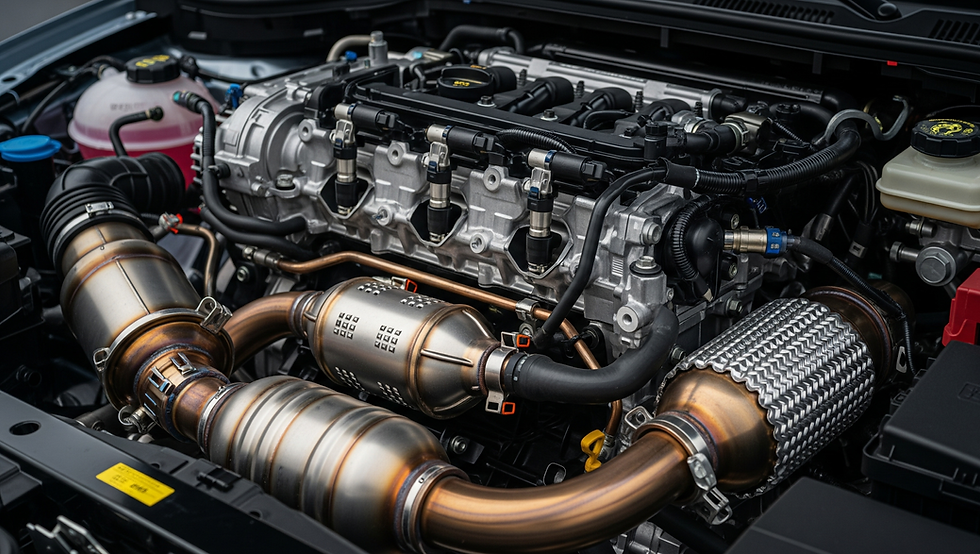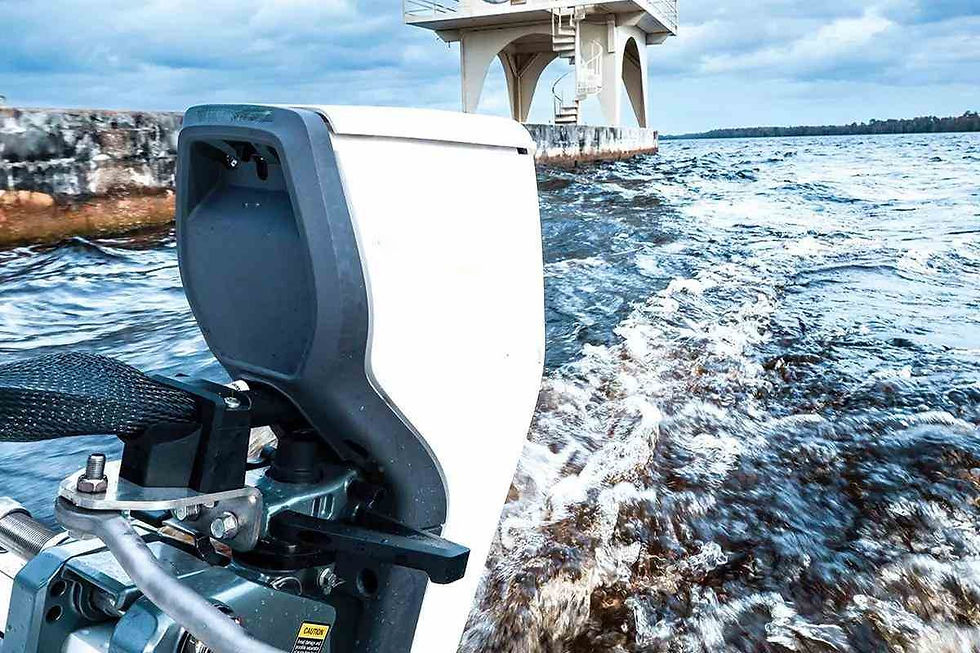Is a BS VI Engine Pollution‑Free? Here’s the Truth
- Raktim Das
- Aug 14
- 3 min read

In the present day, most vehicles use internal combustion engines to release energy. Gasoline and diesel are used as fuel in these engines to generate power. However, during combustion, these engines release harmful emissions that impact the air and climate severely.
To control the emission level, the Indian Government launched the new Bharat Stage Emission Norms BS VI in April 2020. It is an advanced version of BS IV with more strict regulations. But are the BS VI engines entirely pollution-free? Let’s find out!
What BS VI Regulation Really Means
BS IV became mandatory for all vehicles in India back in 2017. But with global concern about pollution increasing, only after three years, BS VI was introduced, skipping BS V altogether. It is essentially India’s version of Euro 6 standards.
The new norm drastically reduced permissible tailpipe emissions. The BS VI engines are designed with a goal to reduce NOₓ emission roughly 70% for diesel and ~25% for petrol engines, particulate matter (PM) by around 80%, and sulphur content in fuel by 90 % (down to just 10 ppm).
Besides that, there are also other major changes required for diesel and gasoline engines, such as:
Engines run on diesel, must have Diesel Particulate Filters (DPFs) and Selective Catalytic Reduction (SCR) systems (using AdBlue) to capture soot and chemically reduce NOₓ.
For petrol engines, especially direct injection, Gasoline Particulate Filters (GPFs) are necessary to limit PM emissions.
On‑Board Diagnostics (OBD) systems became compulsory to continuously monitor emissions-related malfunctions.
Real Driving Emissions (RDE) testing was introduced in BS VI Phase 2, which came into effect in April 2023. This played an important role in measuring vehicle emissions in the real world instead of lab tests.
So, is BS VI Pollution‑free?
The answer to the question is NO! Despite the strict norms, BS VI engines still produce emissions, but at much lower levels. While pollutants like CO, HC, NOₓ, and PM are still being released, this initiative has a high potential to cut down emissions. BS VI ensures significantly cleaner exhaust, but "pollution‑free" would be a stretch.
Even BS VI-compliant engines emit measurable tailpipe pollutants. What the standard guarantees is that they emit far less than older vehicles, e.g., diesel NOₓ drops from ~250 mg/km under BS IV to ~80 mg/km under BS VI; PM goes from ~25 mg/km to ~4.5 mg/km.
What are the Benefits of Using BS VI Engines?

Our future generation deserves a cleaner and pollution-free world. Using BS VI engines for road vehicles and marine vessels leaves a strong impact on the environment. Here are a few benefits:
Massive reductions in NOₓ, PM, HC, and CO emissions, cutting down urban air pollution and improving respiratory and cardiovascular health outcomes.
Ultra‑low sulphur fuel enables after‑treatment technologies to work effectively, reducing corrosion and improving engine life.
RDE enforcement ensures real‑world compliance and avoids lab‑only optimised vehicles.
The capital city of India remains one of the most polluted cities, not just in the country but all across the world. Considering the severity of the situation, the city is introducing a policy where only BS VI (or CNG/EV) commercial vehicles will be allowed from November 1, 2025. This is a strong push to cut city pollution.
Final Thoughts
Air pollution is a global concern. Every country is trying its way to cut down the harmful emissions. In India, BS VI norms are slowly becoming mandatory for vehicles. The BS VI engine reduces emissions of particulate matter and toxic gases like NOₓ, HC, and CO. But calling them pollution‑free would be misleading: they still emit regulated pollutants, though within much stricter limits. The real-world performance depends on proper fuel, maintenance, and driving habits.



Comments